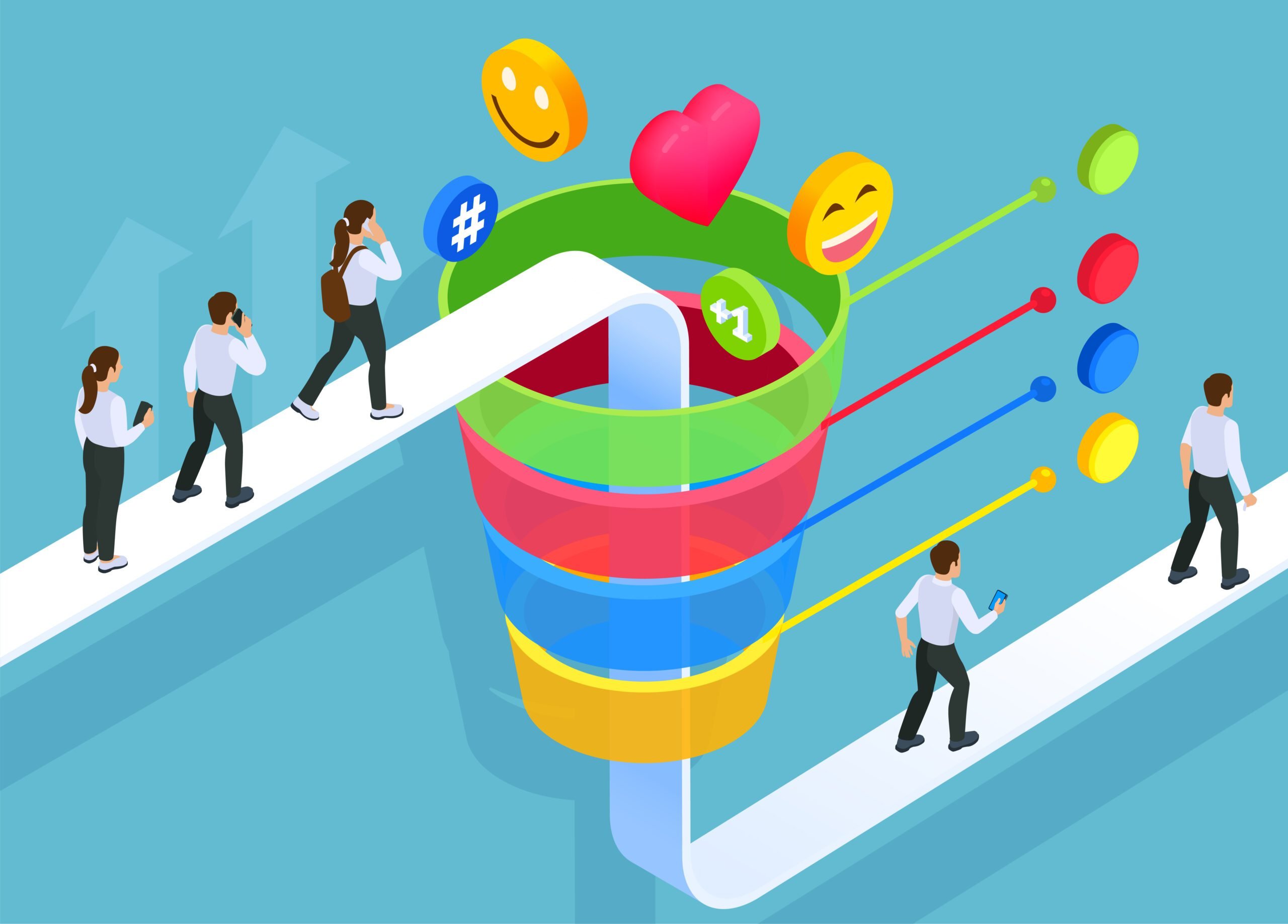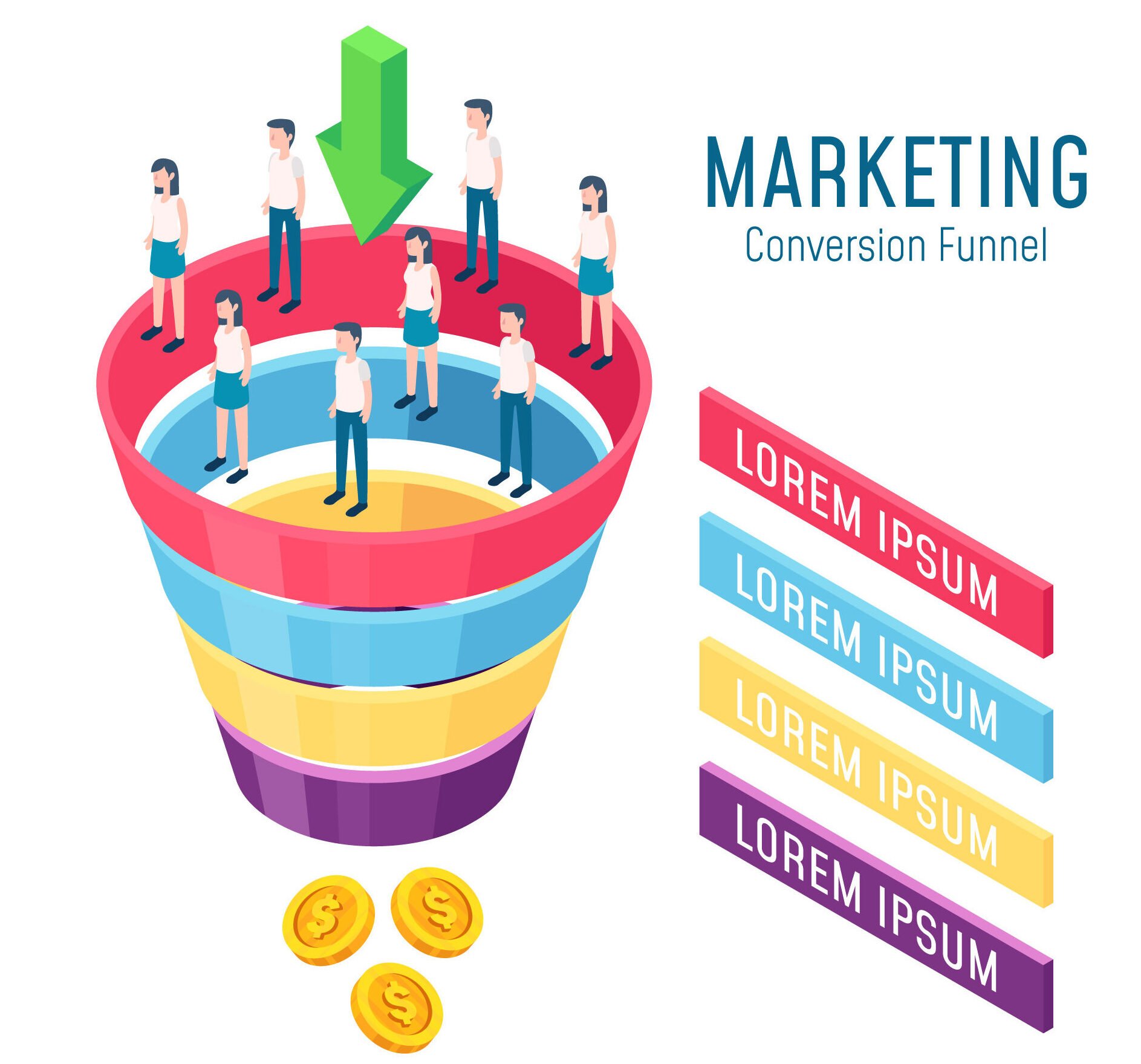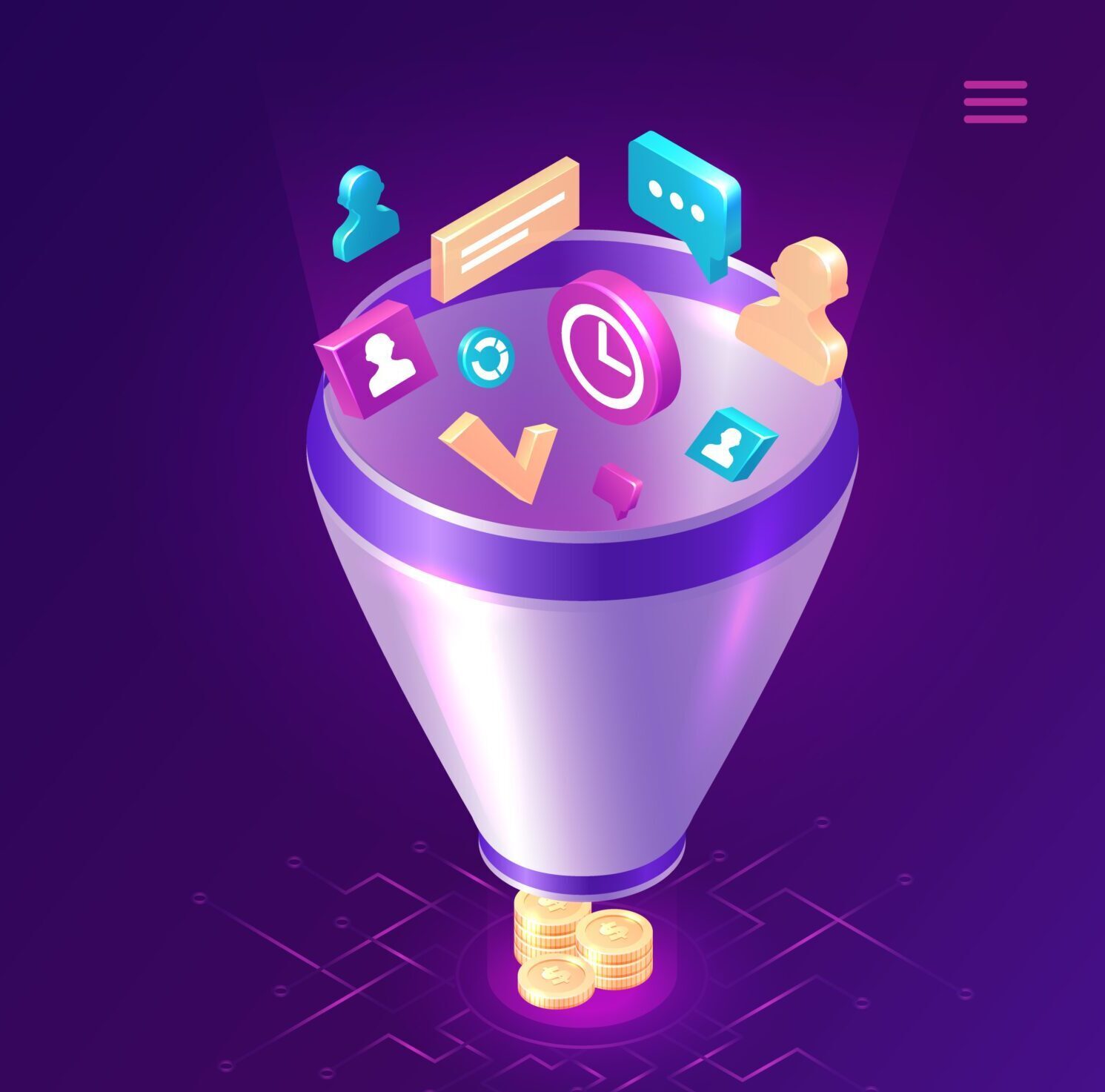One of the greatest goals of everyone engaged in e-commerce is to get loyal customers who can offer their products or services. But achieving this goal is unfortunately difficult in an increasingly competitive e-commerce world.
To reduce this difficulty, marketing strategies have been developed. Marketing is also the first step in creating an effective marketing strategy.
In today’s article, we’re going to answer the question “What’s a Marketing Funnel?” and explain how you can get loyal customers for your business.
What is a Marketing Hunter?
Marketing is a marketing model that enables us to understand the process of converting potential customers to paying customers.
Visualizes a potential customer’s journey from the moment he first encounters a product or service until he decides to buy it.
Marketing is a strategy that addresses the needs and concerns of potential customers at every stage of their journey to the point of purchase. This is why the concept is called huni.
Marketing Funnel Stages
The marketing guide describes the purchase journey of potential customers. In explaining this, it covers four different headings, from the broad stage of the moment potential customers see a product or service to the narrow stage of becoming a loyal customer.

1.Awareness
Awareness is the first stage of marketing awareness. At this stage, potential customers become aware of the product or service you are selling.
Various marketing strategies, such as social media, advertising and content marketing, are also used to keep potential customers informed about products or services.
At the awareness stage, they want to attract the attention of potential customers with the help of specific strategies.
Businesses can try many ways to attract attention to their products or services. These can be summarized as:
• Social media posts about products or services
• Advertising on popular websites
• Blog posts that might be of interest to potential customers.
2. Interest
After raising the awareness of potential customers, it comes to the second stage: Interest.
In the second phase, potential customers evaluate products or services and want to access more information.
At this stage, should provide their potential customers with detailed information about their products or services, such as features and benefits.
At the stage of interest, can also take advantage of incentives such as free trials, demos or webinars to help potential customers make informed decisions so that they can learn more about the product or service.
3. Evaluation
When the evaluation phase is reached, potential customers must decide whether to buy a product or service.
At this stage, can offer special discounts or promotions to encourage potential customers to buy.
Attractive payment methods, such as taxi options or a money-back guarantee, can also be used to make it easier to buy again.
4. Loyalty
In the final stage, a potential customer who has successfully passed the purchase process becomes a loyal customer of our brand.
There are many things that can do at this stage to turn our potential customer into a loyal customer.
Companies can offer special benefits or rewards to maintain customer satisfaction and enable their customers to re-buy.
Again, almost every e-commerce platform can ask for feedback or review of the product as desired.
How to Create a Marketing Hunter?
Building a marketing team in e-commerce is crucial to generating loyal customers. And to do that, you need to know how to create a marketing team.

1. First you need to determine your target audience. By setting your target audience, you can also identify your potential customers.
This allows you to create a marketing perspective that effectively addresses what your potential customers need.
You can conduct surveys to gain insight into the demographics, interests and issues of your target audience, or use tools such as market research.
2. Create content that may be of interest to your target audience. With the content you create, you can attract potential customers to your products or services and interact with them throughout the marketing cycle.
You can also publish your content on these platforms by identifying the social media platforms where your target audience is most active.
3. Make a sale. By this point, you’re the target audience, so you’ve learned a lot about your potential customers.
Based on this information, you need to sell to meet these needs by identifying the needs of your target audience.
If you manage all these steps properly, your potential customers will decide to buy a product or service from your business.
4. Maintain the interest of customers in their products or services. The purpose of marketing isn’t to make a single sale. It’s about getting loyal customers to your brand.
That’s why you need to make purchases and keep the interest of your customers doing business with you by making sure they do more sales.
As a result, a marketing strategy is a strategy that consists of steps to ensure that you get loyal customers for your brand. When you get through these stages most accurately, you can reach the loyal customer community you want to get.
